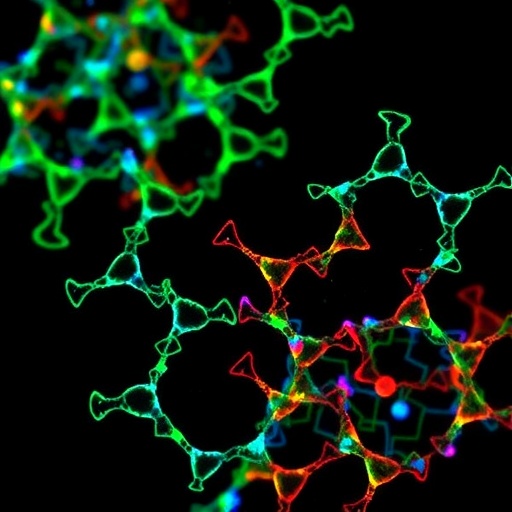In the relentless battle against substance abuse, a groundbreaking study has emerged shedding new light on the efficacy of cognitive-behavioral therapy (CBT) in tackling not only the complex challenge of polysubstance use but also the deeply entrenched psychological barrier of self-stigma among people who inject heroin. This pioneering controlled trial, recently published in the International Journal of Mental Health and Addiction, reveals compelling evidence that structured psychotherapeutic intervention can significantly ameliorate these intertwined afflictions, opening promising avenues for more holistic addiction treatment strategies.
Polysubstance use presents an elevated risk profile compared to single-substance dependency, complicating clinical management and increasing the likelihood of adverse health outcomes. The population of heroin injectors engaging in multiple substance use is particularly vulnerable due to the synergistic effects of various drugs, which exacerbate physical dependency and psychological distress. Importantly, the psychological burden often manifests as self-stigma—a self-directed internalization of societal shame and negative stereotypes. This stigma perpetuates a vicious cycle, impairing self-esteem, increasing social isolation, and diminishing the willingness or ability to seek or adhere to treatment.
The controlled trial spearheaded by Le, Michel, Le, and colleagues meticulously investigated the effects of a CBT program designed specifically to target both polysubstance use behaviors and self-stigma among people who inject heroin. Cognitive-behavioral therapy, with its robust framework rooted in modifying dysfunctional thought patterns and maladaptive behaviors, represents a gold standard in psychotherapeutic approaches to addiction. However, its direct impact on self-stigma within this particularly marginalized cohort has yet to be fully elucidated until now.
.adsslot_UZBM8o3RNx{ width:728px !important; height:90px !important; }
@media (max-width:1199px) { .adsslot_UZBM8o3RNx{ width:468px !important; height:60px !important; } }
@media (max-width:767px) { .adsslot_UZBM8o3RNx{ width:320px !important; height:50px !important; } }
ADVERTISEMENT
Participants were recruited from clinical and community settings, ensuring that the sample truly reflected the demographic and behavioral heterogeneity characteristic of heroin injectors struggling with multiple substances. The CBT intervention encompassed a series of structured sessions incorporating cognitive restructuring, behavioral activation, and problem-solving techniques—all tailored to address the unique challenges inherent in polysubstance use. Integral to the therapy was the emphasis on dismantling internalized stigma through psychoeducation and guided reframing exercises.
Statistical analyses demonstrated that individuals undergoing the CBT intervention exhibited a marked reduction in polysubstance consumption frequency and intensity across the trial duration. Furthermore, self-reported measures of self-stigma showed significant improvement, strongly suggesting the dual potency of the therapy in targeting both behavioral dependency and psychological distress simultaneously. These therapeutic gains were sustained during follow-up assessments, indicating lasting benefits beyond the active treatment phase.
From a neuropsychological perspective, CBT’s efficacy may stem from its modulation of cognitive control networks implicated in both addictive behaviors and self-referential processing. By fostering enhanced self-awareness and cognitive flexibility, participants learned to identify and challenge automatic negative self-beliefs fueled by stigma and to develop healthier coping mechanisms that decreased reliance on substances as a form of self-medication.
The implications of these findings hold transformative potential for addiction treatment paradigms. Traditionally, interventions have focused almost exclusively on pharmacological detoxification or singular aspects of behavioral counseling, often neglecting the psychological component of self-stigma that underpins relapse risk and treatment dropout. Integrating CBT protocols that explicitly address self-stigma could enhance therapeutic engagement, improve treatment adherence, and ultimately reduce relapse rates among populations most at risk.
Moreover, the study underscores the necessity of comprehensive screening methods in clinical practice to detect the multifaceted issues afflicting people who inject heroin. Psychometric assessments tailored to quantify levels of self-stigma, in tandem with detailed substance use histories, can aid clinicians in personalizing treatment plans. Such precision medicine approaches are likely to optimize outcomes and resource allocation within addiction services.
Equally important, the trial illuminates the intersection between mental health and social factors, reinforcing the notion that addiction is not merely a neurological disorder but a complex psychosocial phenomenon. Addressing stigma, both internalized and external, shifts the therapeutic discourse towards a more compassionate, humanistic model that validates patients’ lived experiences while empowering them to reclaim agency over their lives.
Future research directions should explore the neurobiological correlates associated with reductions in self-stigma and substance use following CBT, potentially employing imaging techniques and biomarker assays to elucidate mechanistic pathways. Additionally, replication studies across diverse cultural and socioeconomic contexts would validate the generalizability of these findings and inform culturally sensitive adaptations of therapeutic protocols.
In conclusion, this controlled trial stands as a landmark contribution to addiction medicine, demonstrating that cognitive-behavioral therapy can effectively reduce polysubstance use and dismantle the pernicious cycle of self-stigma among people who inject heroin. By addressing the full spectrum of biological, psychological, and social determinants of addiction, CBT emerges not only as a clinical tool but also as a beacon of hope for overcoming the multi-layered challenges faced by individuals grappling with this formidable public health crisis.
Subject of Research: Cognitive-behavioral therapy (CBT) intervention targeting polysubstance use and self-stigma among people who inject heroin.
Article Title: Reducing Polysubstance Use and Self-Stigma Through CBT: A Controlled Trial Among People Who Inject Heroin.
Article References:
Le, S.M., Michel, L., Le, M.G. et al. Reducing Polysubstance Use and Self-Stigma Through CBT: A Controlled Trial Among People Who Inject Heroin. Int J Ment Health Addiction (2025). https://doi.org/10.1007/s11469-025-01495-1
Image Credits: AI Generated
Tags: addressing multiple substance dependenciesCognitive-behavioral therapy for substance abusecontrolled trial on addiction therapiesevidence-based addiction therapiesheroin addiction and mental healthholistic approaches to addiction treatmentimpact of stigma on recoveryovercoming addiction-related shamepolysubstance use treatment strategiespsychological interventions for addictionreducing self-stigma in addictionself-stigma in heroin users





